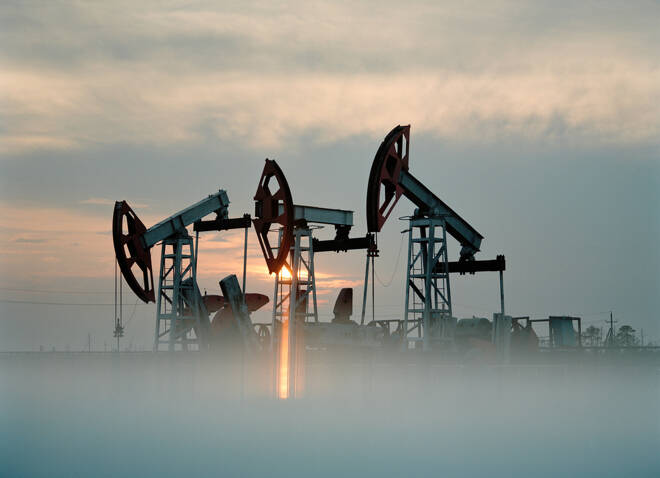Advertisement
Advertisement
Oil Could Be At 65-75$ Per Barrel Sooner Than Many Think
By:
A combination of bearish oil price factors remain, including the US need to see oil lower, and the true extent of the Russia-Ukraine war premium has been underestimated, with oil trading at around US$65 per barrel when the true premium began
Key Highlights
- A combination of bearish oil price factors remain, including the US need to see oil lower.
- The true extent of the Russia-Ukraine war premium has been underestimated.
- Oil prices were around US$65-70 per barrel before the true war premium began.
As predicted by FX Empire, crude oil prices have seen a dramatic reversal from just under US$130 per barrel (pb) of Brent in early March to just over US$100 pb now. Precisely the same key bearish factors for oil prices cited by FX Empire have emerged.
These were: the political and economic necessity for the US to bring prices down (in the shape of SPR releases from it and from IEA member states), China’s increased COVID-related lockdowns, anticipation of a new Iran ‘nuclear deal’, and the prospect of the end of the Russia-Ukraine conflict. So, where are crude oil prices headed from here?
In broad terms, all of the above bearish factors remain in play, so there is every reason to expect the US and IEA member states to make good on their statements to continue with planned SPR releases.
China’s COVID-related lockdowns are likely to be extended, with reports over the weekend that authorities in other cities, including Ningbo and Beijing, have begun implementing limited restrictions to curb the spread of the virus.
Russia has stated that it might be prepared to let Ukraine join the European Union, provided that it does not attempt to join NATO, and the new Iran nuclear deal is still under review by both sides.
Oil Was Trading At Around US$65 Pb Before The Smart Money War Premium
More specifically, though, the US$65-75 Brent crude oil price band derives from two key factors: first, what used to be called the ‘Trump Price Cap’, with the floor being US$35-45 pb – the price band in which U.S. shale producers make good profits; and, second where the oil price was before the ‘true’ Russia-Ukraine war premium came to be noticed by most.
First, the ‘Trump Price Cap’ was a reflection of the above-mentioned negative political and economic factors that accrue for the US if oil prices remain high for long. The government of former President Donald Trump was so successful also in controlling the cap on oil prices that they only ever stayed persistently above the US$75 per barrel of Brent level during his entire presidency from April to October 2019.
When they went above the US$75 pb level Trump directly threatened the Saudis with the withdrawal of US military protection if they did not increase their production, which they then did.
Second, the true Russia-Ukraine war premium did not begin just before the invasion on 24 February when Brent stood at around US$95 pb. Rather, the war premium may well have begun when the very smart money funds started to buy on the expectation of such an eventuality.
This dates back to September 2021 when U.S. intelligence officers started to notice unusual Russian military movements on the Ukraine border after the conclusion of the joint Russia-Belarus military exercises that had taken place. At that point, Brent was trading at around US$65 pb.
About the Author
Simon Watkinsauthor
Simon Watkins is a former senior FX trader and salesman, financial journalist, and best-selling author. He was Head of Forex Institutional Sales and Trading for Credit Lyonnais, and later Director of Forex at Bank of Montreal. He was then Head of Weekly Publications and Chief Writer for Business Monitor International, Head of Fuel Oil Products for Platts, and Global Managing Editor of Research for Renaissance Capital in Moscow.
Latest news and analysis
Advertisement
